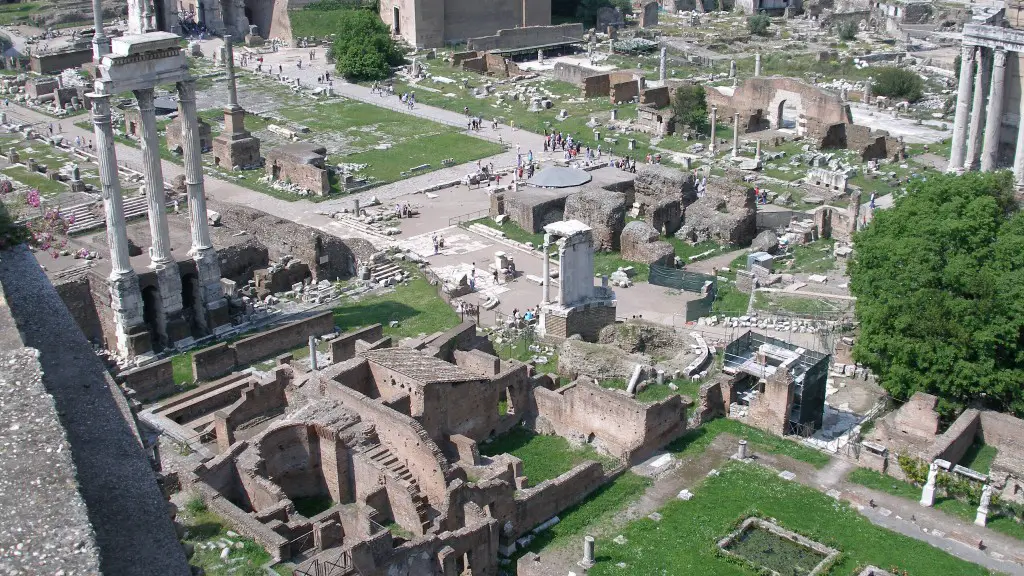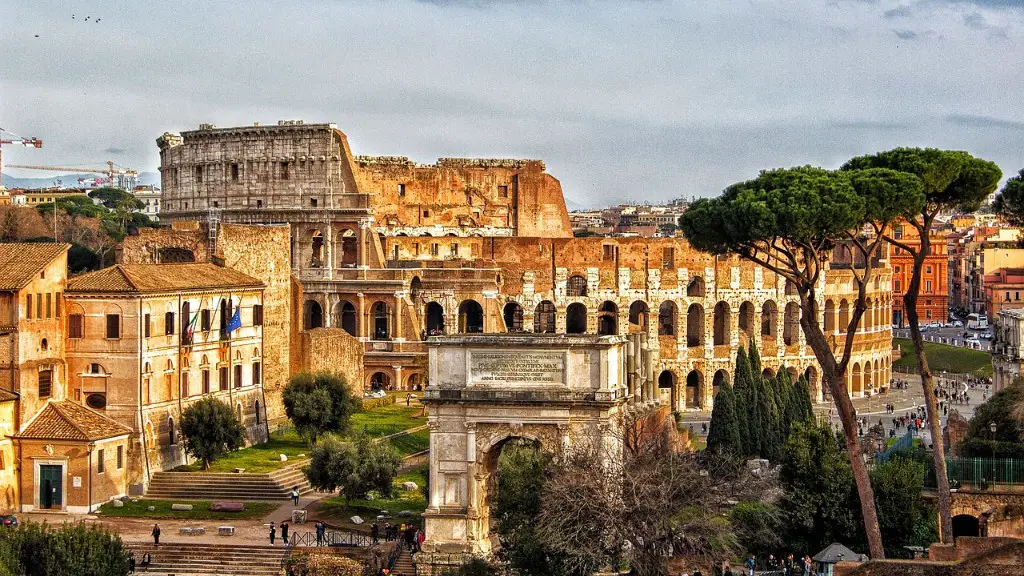Introduction
People have long been impressed by the greatness of Ancient Rome. The Romans were well-known for their formidable armies and impressive public works capable of mending divides in the empire stretching from England to Syria. But behind the grandeur and spectacle, what was life like in the Eternal City? In particular, what was the survival rate for residents of Ancient Rome? According to various sources, life expectancy was quite low in Rome of old, with most inhabitants only living to around 30 years of age. However, there were factors that could influence the survival rates of Roman citizens and help them reach their full longevity potential.
Background
From the Republic to the Empire (509 BC to 476 AD), Ancient Rome had grown from a major city-state to one of the most powerful empires in human history. With over six million inhabitants spread over two and a half million square miles, Rome was the centre of a vast network of trade, taxation, and administration covering the Mediterranean basin and beyond. Despite the rise of Roman power, hygiene and sanitation were far from perfect, and the absence of basic health infrastructure led to a high mortality rate among the people. The average age of death in Rome was between 30 and 35 years.
Health Infrastructure
The ancient Roman government provided no public health system or emergency services and did not allocate resources to improve public sanitation or reduce disease, leaving the public health of the city to individuals and private institutions. Roman doctors had limited pharmacological and surgical knowledge and treatments, instead relying primarily on herbal remedies, lifestyle changes, and prayer-based healing services. Hospitals for soldiers and slaves were set up in the Imperial Roman period, but actual cases of medicine in Ancient Rome were generally seen as a last resort.
Social Factors
Apart from the lack of basic medical care, social and economic factors could have had an influence on Ancient Rome’s survival rate. Those with more wealth would have had a better chance of survival as they would have had access to better food, shelter, and medical care, while the poorer members of society would have been more vulnerable to disease, injury, and harrowed conditions. In addition, Rome’s laws discounted the lives of slaves and non-citizens, while women and children had little to no legal rights compared to men.
Environmental Factors
The physical environment of the city of Rome and its surrounding areas was a major factor in the life expectancy of its citizens. While the city of Rome itself was generally a healthier environment than some of its neighbouring towns and villages, the Mediterranean climate of hot, dry summers and cold wet winters made for difficult living conditions. Poor air quality, inadequate drainage of sewage, and the presence of rats and other pests made life particularly harsh for those at the lower end of the social hierarchy.
War
The military campaigns and civil wars of the Roman era could also have a negative effect on the life expectancy of Roman citizens. War not only killed off many of the able-bodied men and women in the empire, it could also lead to economic downturns and famine, which had the greatest impact on individuals with the least access to resources. Furthermore, the presence of large foreign armies within Roman territories increased the prevalence of disease and decreased the access to medical resources.
Conclusion
In conclusion, life expectancy in Ancient Rome was low, with most individuals only living to around 30 years of age. This life expectancy was largely impacted by factors such as the lack of an organized public health system, the discrepancies between wealth and poverty, the difficult physical environment, and the presence of war. Despite this, there were a few Roman citizens who were able to live longer than average, often due to a combination of luck and access to resources.
Social Upheaval
Social upheaval during the course of Ancient Rome’s history played a major part in the lifespan of Roman citizens. From slave revolts to civil wars, the Roman Empire was often in turmoil, leaving individuals at the mercy of whatever government was in power. In addition, the concentration of political power in the hands of a few elites led to unbalanced distributions of wealth and resources, which again, had a direct influence on the life expectancy of Roman citizens.
Disease
Epidemics of disease were also a major factor in the life expectancy of Ancient Rome’s inhabitants. Without any public health infrastructure and with limited available medical care, diseases such as malaria, cholera, dysentery, and influenza could quickly spread through the city, killing off those unable to afford treatment. With the presence of a large and densely populated city, coupled with a warm and humid climate, it is no wonder that epidemics were a huge factor in the life expectancy of Ancient Rome’s population.
Culture
The Ancient Roman city was heavily influenced by the culture of its people, who were renowned for their appreciation of art, literature, and philosophy. These activities created a positive atmosphere in the city and helped to counterbalance some of the more devastating effects of poverty, war, and disease on the life expectancy of Roman citizens. That being said, it is important to note that artistic and literary activities were primarily a luxury reserved for those with more wealth and social standing.
Ancestral Traditions
In addition to their rich cultural lives, the Ancient Romans also had strong ancestral beliefs and traditions that may have had an influence on their life expectancy. It is believed that extended family units would have helped to spread the financial burden of childcare and care for the elderly, while also providing individuals with emotional and psychological support to help them cope with the harsh realities of Roman life. These social networks would also have acted as informal healthcare systems, providing individuals with access to various techniques and therapies for maintaining wellbeing.


